The Corsair SP (Static Pressure), AF (High Airflow) 120/140mm Fan Review
by E. Fylladitakis on November 25, 2015 8:00 AM ESTCorsair's 120mm Performance
The AF120 Performance and AF120 Quiet Edition
First one up is the 'High Airflow' variant of the 120mm line (non-LED), which comes in Performance and Quiet modes. This is the Performance variant pressure/volume response at 12V and 7V:
Whereas the quiet model has this response - note the axes are the same for both AF120 models in this case.
While both AF120 fans in the graphs above share the same shape and design, with the only difference being their rotational speed, the performance curves are of similar shape but different magnitude. The performance of the AF120 fans is low when the impedance is very high but their volume flow capacity greatly increases when the airflow impedance falls below medium levels.
The SP120 Performance and Quiet Edition
As we move onto the Static Pressure line of fans, featuring fewer but wider fan blades (only 7 vs 11), the expectations lie in higher airflow in high-impedance (dense liquid cooler) scenarios. First up, the Performance model at 12V and 7V:
The Quiet model has reduced fan speeds, which gives a very different graph:
The performance of the SP120 is obviously much different than the AF120, as expected, but is also very different from the performance of the SP140 LED as well. The Performance Edition of the SP120 has an outrageous maximum speed of 2300 RPM and our instruments recorded an outstanding static pressure of 3.42 mmH2O at that speed. The curve declines sharply, with the SP120 displaying mediocre airflow gains as the airflow impedance decreases. It also has a significant stall area within the medium airflow impedance region.
The SP120 Perfomance and AF120 Performance Comparison
As the speed of the SP120 Performance Edition at 7 Volts and the maximum speed of the SP120 Quiet Edition coincide, it can be noticed that the two fans have an almost identical performance curve when operating at the same speed. This is natural as only the rotational speed of the fans differs, the design of the fan itself is identical. But when we compare the SP120 and AF120 variants to each other, we get the following (again, at 12V and 7V)
And in the Quiet versions (note, different axes):
The above two comparisons between the Performance and Quiet versions of the SP120 and AF120 respectively are somewhat unfair. From just a quick look at the graphs, it appears that the SP120 outperforms the AF120 under almost any conditions when both fans are operating at their maximum stock speeds. That however is not correct, as the SP120 versions have a much higher top speed are are in both cases louder. With both the AF120 and the SP120 running at the same speed (and similar noise profiles) we got the following performance curves.
With both fans running at the same speed, the advantages and disadvantages of each design become more apparent. The AF120 provides higher air volume flow in low airflow impedance setups while the SP120 can maintain higher air volume flow levels when the airflow impedance is high. Strangely, even though the SP120 is moving considerably less air while entirely unobstructed, it generates about the same level of noise as the AF120. We can only assume that the large blades of the SP120 generate a very turbulent air flow.


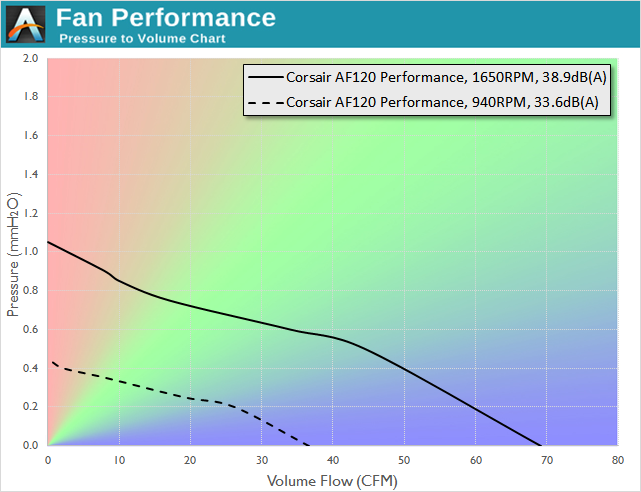
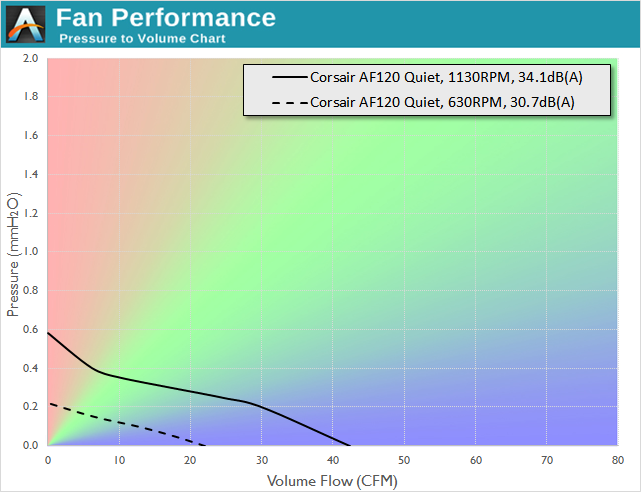
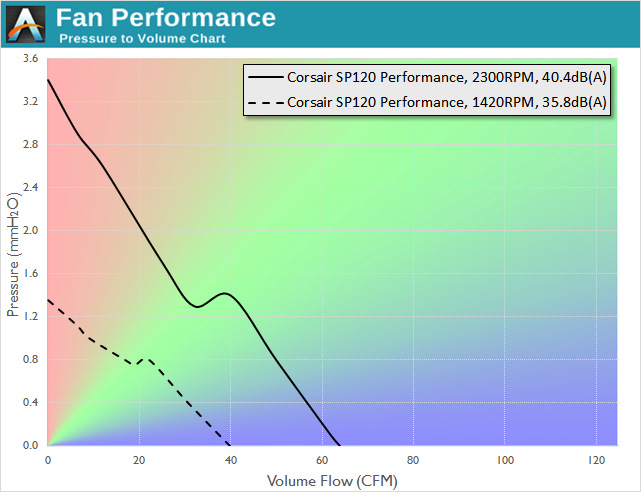
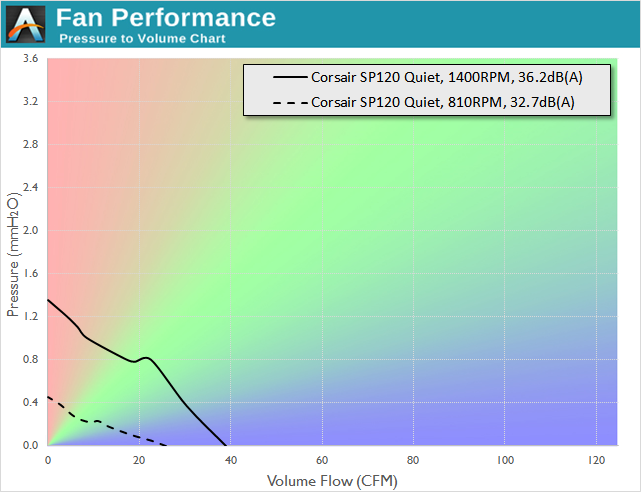

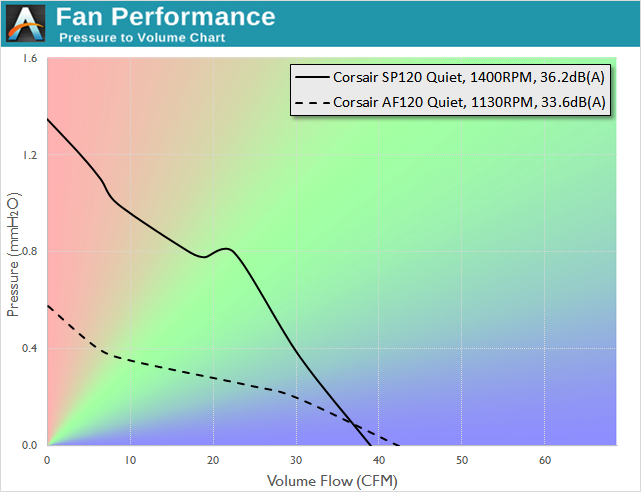
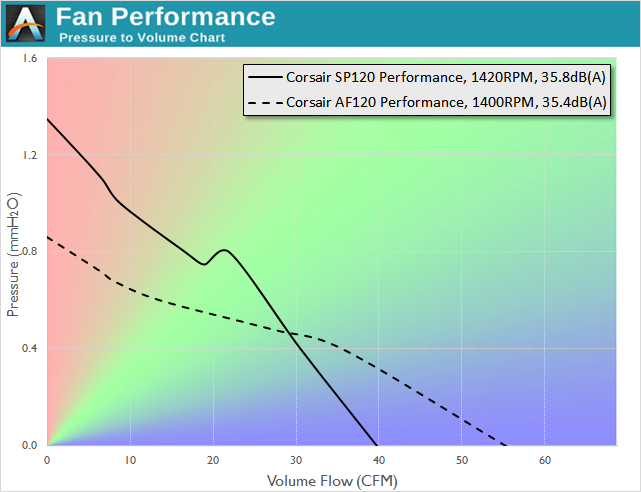








92 Comments
View All Comments
Gasaraki88 - Tuesday, January 5, 2016 - link
I hate how you change the scale for every single chart. Why leave so much blank space in the CFM scale for some charts but not others? You make the scale all the way up to 120CFM but the max a fan got in the chart was 70 CFM. You could have lowered all the charts to 80CFM scale and it would have been easier to read and compare. I thought they teach these things in math classes in high school.Gasaraki88 - Tuesday, January 5, 2016 - link
But thanks for your hard work with the tests.